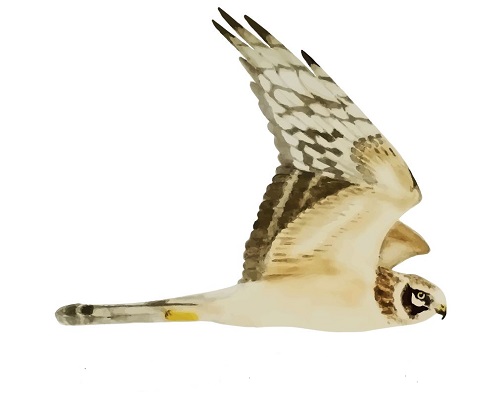Her på Skagen Fuglestations blog bringes korte nyheder i dagbogsformat om hændelser på fuglestationen.
A very windy day
We had an unexpected start to the morning as we walked down the stairs all ready to go to the migration count. The wind was so strong overnight that it had blown out one of the windows over the doorway into the station. Thankfully it hadn’t smashed and we managed to dislodge it from the door so we could get out!

Karen-Marie very kindly gave Thomas, Simon Jr and I a lift in her car to Nordstrand so we didn’t have to struggle our way there on our bikes in the strong winds. Knud met us there and showed us a nice sheltered spot in one of the dunes where we could do the migration count from and not get completely blown away.
There were a lot less birds migrating today compared to yesterday. No Red-throated Divers (Rødstrubet Lom) were counted at all and there were lower numbers of Gannets (Sule), Kittiwakes (Ride) and Razorbills (Alk). It was quite good day for ducks again with over 400 Common Scoters (Sortand) counted, plus Velvet Scoters (Fløjsand), Wigeon (Pibeand), Teal (Krikand), Greater Scaup (Bjergand), Mallard (Gråand), Long-tailed Duck (Havlit), Goldeneye (Hvinand) and Eider (Ederfugl).
We also saw Hooded Crows (Gråkrage) and Jackdaws (Allike) coming in from the sea and three more Whooper Swans (Sangsvane). A Hen Harrier (Blå Kærhøg) was a really nice sighting near the end of the count and three Snow Buntings (Snespurv) were also spotted on the beach.
Whilst we were counting, Gustav led a tour for 15 visiting people. He spent a couple of hours out, walking with them along the Sandormen track and out along the beach. He also showed them all the ringing equipment back in the lab and explained all about the ringing that we do at the station. The people all really enjoyed the tour.
Karen-Marie kindly gave Thomas, Simon and I a lift back to the station again after the migration count and on the way back we enjoyed seeing two Lapwing (Vibe) flying over. Before we had a chance to warm up inside the apartment we set off again, walking into the wind to Kabeltromlen. We checked all the nets were securely closed and added some extra ties to make sure none of them will unravel in the strong wind. As we were walking around, we flushed two Common Snipe (Dobbeltbekkasin) in the reedbed which were very nice to see. Simon had so many layers on that he struggled to get out of his waders when we were finished!

The walk to Kabeltromlen and back warmed us up a lot so we cooled off with some ice cream back at the station, and then warmed ourselves up again with hot chocolate kindly made by Magnus from the lighthouse shop downstairs. We then had some time to relax inside out of the wind although we could still hear it howling around the building! Gustav made a social media post about the two Waxwings (Silkehale) we ringed over the last couple of days and all the migration count data was entered.
Thomas, Gustav and I then enjoyed a very wild and windy walk all the way to the tip at Grenen. The sand looked amazing as it was blown in the wind and there were massive waves crashing on the beach. It was very fun to try and lean on the wind and to run back with the wind pushing us along. Whilst we were out, we enjoyed watching some Kittiwakes (Ride) and Razorbills (Alk) migrating very close to the beach.

Thomas particularly enjoyed the sea form blowing in the wind!

Meanwhile, Karen-Marie and Søren braved the elements and went into Skagen to see a photography exhibition which showed how the landscape at Grenen has changed over time. When we were all back at the station, Simon Jr did a presentation on nocturnal migration and sound recordings which was very interesting. He showed us how to analyse the recordings and identify which species made each call.

Karen-Marie and Søren then cooked us a delicious dinner and we had a brief table tennis match before enjoying a cake for desert too. A very nice busy windy day!
People: Hayley Land, Gustav Nyberg, Simon Kiesé, Thomas Weston, Simon S. Christiansen, Knud Pedersen, Karen Marie & Søren Leth-Nissen.
A link to today's observations from volunteers and local observers.



